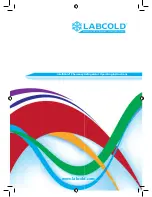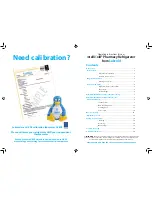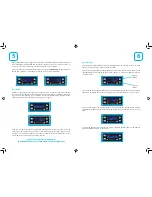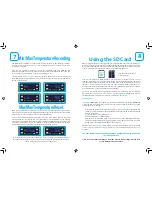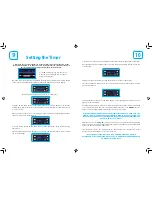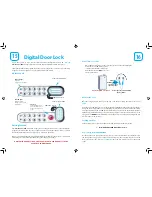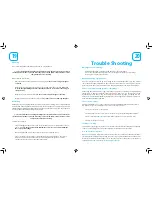
19
20
Trouble Shooting
My refrigerator is not working?
•
Check that the fridge is plugged in and the plug socket is turned on
•
Try another appliance in the power socket. If this appliance works but your fridge
doesn’t, please contact your retailer
My fridge is making a gurgling noise
All
Labcold
refrigerators work by evaporating an environmentally friendly gas. This is what
causes the back of the refrigerator to get cold, and as part of this process the gas has to turn
back in to liquid. This is why sometimes you will hear liquid sounds coming from the fridge.
There is condensation on the glass door of my fridge
If the fridge door is left open too long, or the fridge is over full, or is working in a high ambient
temperature or humid conditions, condensation may form. This is a normal part of the
refrigeration process and as long as the temperatures remain in range, is nothing to worry
about.
Labcold
I
ntelli
C
old® Pharmacy Refrigerators are designed for temperate climates, 16⁰
to 32⁰C, with a humidity of 60% RH.
There is ice in my fridge
Small accumulations of ice on the cold plate are quite normal and should melt away after a
few minutes. Larger accumulations can occur for a variety of reasons:
•
The room is too warm or even damp
•
The temperature is set too low - please check the set point by pushing the
set
button.
•
Please contact the
Labcold
service team if the set point is too low (i.e below 3⁰C).
•
The door is left open too long
The fridge is rocking
This is because the refrigerator is not on a level surface. Check that the feet have been adjusted
so the top of the fridge is level and the refrigerator is standing on a hard surface.
How do I check the set point?
All
Labcold
pharmacy refrigerators have a factory set point of 5⁰C. This is the manufacturers
recommend temperature for the storing of vaccines. If you press the
set
button on the front it
will show the temperature the fridge is set to. Should you wish to change the set point please
contact the
Labcold
service team at
service@labcold.com
.
To defrost you should:
•
Leave unplugged with the door open for at least 6 hours at room temperature or until
any ice is melted. Do not use a sharp implement to remove ice as this will damage
the coating of the fridge
•
Dry thoroughly and remove any surplus water before returning to use
•
Leave cooling for at least 6 hours or until the temperature display show the correct
temperature for at least 30 minutes before reloading with temperature sensitive
contents such as vaccines or other pharmaceuticals.
It is essential that you unplug the refrigerator from the mains to prevent electric
shock and transfer the contents where they can be stored and monitored at the correct
temperatures before defrosting
Although your
Labcold
fridge features automatic off-cycle defrosting, it is recommended that
it is defrosted manually if there is a build up of ice. This can happen for a number of reasons, for
example in times of high humidity, if the door has been opened for a long time, the refrigerator
is overstocked or the ambient temperature is high.
Defrosting
Cleaning
When cleaning you should:
•
Remove the shelves and clean with weak soapy water. Do not use strong detergents
or bleach
•
Wipe the inside of the fridge in the same solution and dry with a soft cloth. Take care
to avoid the light fitting and ensure that the drain hole at the back of the fridge is
clear of debris
•
Wipe the door seal with a damp cloth. Do not use strong detergents or bleach
•
Gently remove the dust on the back of the fridge. Take care not to damage the pipes
It is essential that you unplug the refrigerator from the mains to prevent electric
shock and transfer the contents where they can be stored and monitored at the correct
temperatures before cleaning
It is recommended that your fridge is cleaned on a regular basis.

